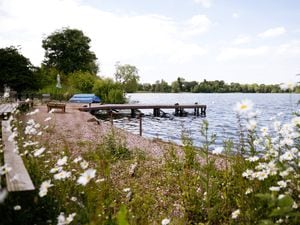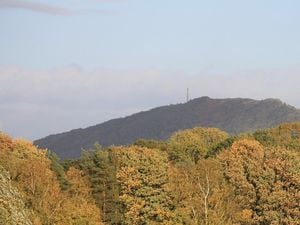The centre keeping an eye on the skies for deadly asteroid
Unlike disease and disaster, the extra-terrestrial threat to mankind has a number, not a name - 1950DA, writes Mike Lockley.
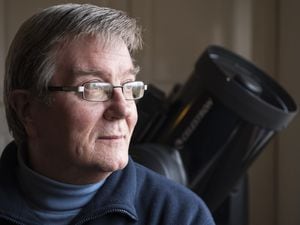
It is a two-kilometre-wide fiery iron and nickel knuckleduster with the capability of delivering a lethal punch to our planet. That’s big enough to spark a “global event”.
At present, asteroid 1950DA is less than a sneeze on the milky cosmos carpet captured by the world’s most powerful telescopes.
Yet it is spinning relentlessly towards us, the rock’s progress monitored by a Doomsday facility straddling Shropshire’s border with Wales.
Surrounded by open grazing land and soothed by the bleats of sheep, Jay and Anne Tate – keepers of Knighton’s domed Spaceguard Centre – watch 1950DA’s relentless rush to our atmosphere along with other space wrecking balls capable of delivering a devastating blow to humanity.
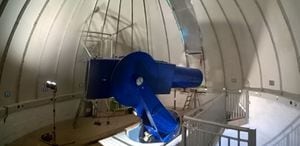
Excuse the childish pun, but the Tates’ work has endorsed scientists’ belief that asteroids are mankind’s ultimate pain in the backside.
They watch with a sense of inevitability, even fatalism. One of the angry salt grains churning and swirling beyond the night sky’s glistening tapestry will hit civilisation where it hurts. It has to. You can’t vaccinate against an asteroid strike. Those raising a glass to the New Year should dwell on a singularly sobering thought as the clock chimes 12.
There may be only 858 more such shindigs. For 1950DA – a numberplate of destruction – will, some believe, strike in 2880. March 16, to be precise. It is an invaluable warning for those who pre-record Emmerdale.
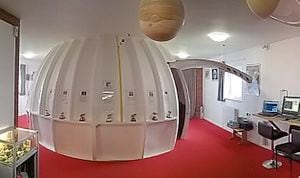
The digits that comprise our potential nemesis’s title only crank-up the despair and helplessness. Hurricanes have been given names we can relate to and there’s some solace in knowing the heavenly fireball that will smash a gaping hole in the Earth’s crust has been christened “Colin”.
Jay, aged 67, stressed the threat posed by 1950DA has diminished, but there are plenty of others playing ping pong uncomfortably close to our planet. It’s the little ones – mere hailstones hurtling through the ether – that will pit and pebbledash, that will prove beyond problematic.
We may not be able to stop them, but, thanks partly to the Safeguard Centre, we can take steps to limit the carnage.
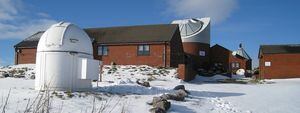
Scientists actually deflected one and the hope is they’ll gain the technology to bat them all off. That day cannot come soon enough.
Jay, a former military missile guru, knows we will be hit hard by an asteroid. He wants others, including our government, to wake-up and smell the coffee.
We’ve been lucky for years. To date, asteroids have merely struck the goalpost of our atmosphere. We cannot ride our luck forever.
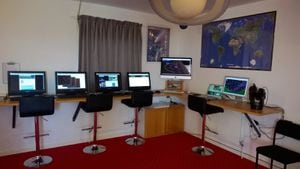
“It is inevitable,” he told me. “There are 1,150 objects on the risk list. It is just a question of when. It may not be for thousands of years, it may be next week, although its highly unlikely to be next week.”
That’s reassuring. That would rather spoil the seasonal break.
“Does it worry me?” shrugged Jay, breaking from his near constant Armageddon watch. “Does being hit by a bus bother you? They are both logical risks in life.”
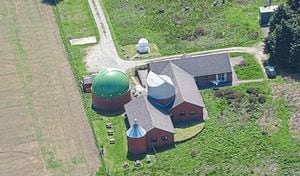
There have been warning signs.
In 2013, a 12,000 ton meteor exploded over the Russian town of Chelyabinsk with the power of an atomic bomb, injuring 1,500 people and shattering glass in six cities.
In 1908, a 160ft asteroid burst in the skies of sparsely populated eastern Siberia, the splinters flattening 80 million trees.
But it’s been 65 million years since a lump of space rock truly devastated life on Earth. The monster, believed to be over 150 miles across, that struck what is now Yucatan, Mexico, is believed to have done for the dinosaurs. We’re overdue a big one.
Jay and Anne are unassuming keepers of the Spaceguard centre, a domed, Doctor Who style ranch of white domes and brick buildings nestling in untamed countryside where nightfall reveals a dazzling, shimmering tapestry of stars. It is the country’s only observatory dedicated to monitoring NEOs – Near-Earth Objects.
Its website warns darkly: “The most significant natural danger to life on Earth comes from asteroids and comets.”
Jay bought the sci-fi structure, formerly Powys Observatory, 21 years ago. Since then, astronauts have made pilgrimages to the centre, and famed cosmologist Stephen Hawking visited.
It is a burglar alarm to the solar system – and the facility’s powers will soon be beefed-up by the installation of a new, state-of-the-art telescope.
In layman’s terms, rather than simply monitoring the progress of rogue asteroids, Jay and Anne will be able to watch them.
Open to public, the centre’s vital data is seized upon by American scientists and the Tates are currently charting the progress of half-a-dozen NEOs for Nasa.
Our own government has been less enthusiastic over the Spaceguard Centre, which survives through donations.
That, Jay believes, is a serious own goal.
“We are looking at the only major, nailed-on hazard that can finish off our species at a stroke,” he said.
“But you can’t see it on telly, therefore it does not exist. The Government has compiled a national register of risk. It includes pandemics, terrorist activity and flooding, but asteroids and comets are not on it.
“The Government doesn’t recognise the danger exists. It almost did, in 2000, but that came to nothing. No one else was doing this and I was told not to. I tried to persuade them to do something. Initially, they were enthusiastic, but it didn’t get anywhere.
"When you’re banging your head against a brick wall for 20 years you eventually think, ‘blow it, we’ll get on with it ourselves’.
“We are not in this to break financial records. Before the pandemic we got between 4,000 and 5,000 visitors a year and the majority say ‘We didn’t know you exist’.”
Farmers who work the surrounding hills know the centre exists, but aren’t really sure what it does.
In short, Whitehall has buried its head in the sand - sand that will be turned to glass by the molten heat of an asteroid strike.
But the study of deep space boulders is not simply about death and destruction. They are laced with precious metals, such as gold, and some US companies are already investing in technology that could, one day, make asteroid mining a reality. The wealthy may one day drip bling from Mars.
Jay’s long days scrutinising the firmament’s inky blackness have uncovered many strange and uncomfortable objects, but one thing has eluded him. He’s yet to spot a UFO. He’s not surprised or crestfallen.
“Of course I haven’t seen UFOs,” he said indignantly. “That’s because there aren’t any. Unidentified Flying Objects quickly become Identified Flying Objects.”
That’s unless they’re captured on camera by people with very shaky hands. And a surprising number of UFO spotters have shaky hands, judging by the stills and footage. Likewise, UK big cat witnesses.
“There is life out there,” Jay added, “but it would have to break every law of physics to get to us.
“And it probably isn’t intelligent life. Intelligence is not a very good evolutionary trait. If you’re intelligent, you don’t last very long.”
In any case, ET would do well to give Earth a wide berth. One day, something very big, very heavy and very destructive is going to hit it.
When it does, Jay won’t be around to declare: “I told you so.”
For Spaceguard Centre opening times and admissions, go to spaceguardcentre.com

